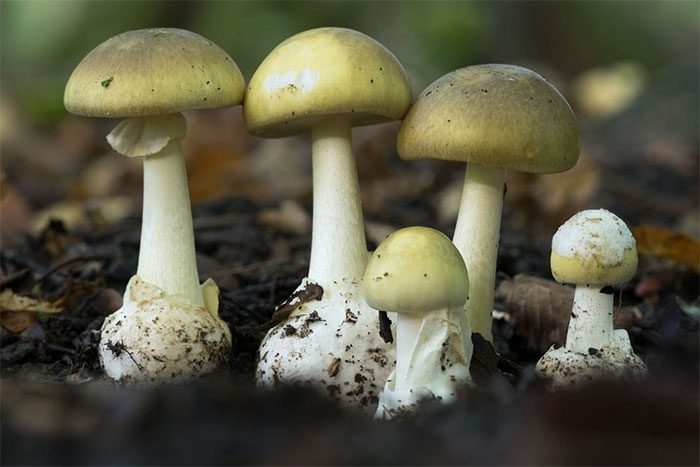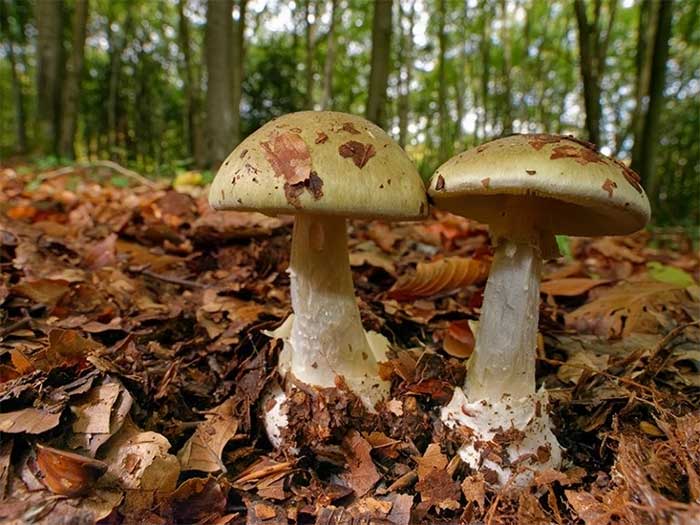Using CRISPR-Cas9 Gene Editing Technology, Scientists Decode the Mysterious Kill Mechanism of the Death Cap Mushroom.
The Death Cap Mushroom (Amanita phalloides) has been dubbed the “King Killer” for centuries and is responsible for 90% of mushroom poisoning deaths today. Despite this, the mechanism of its toxins remains a mystery. Now, with CRISPR-Cas9 gene editing technology, scientists have uncovered the mode of action and an antidote for this lethal fungus.
Standing about 15 cm tall, with a “cap” that is brownish-yellow or yellow-green, the Death Cap Mushroom does not appear dangerous. In fact, it is said to have a pleasant taste, according to accounts from those who accidentally consumed it and survived. However, after ingestion, the toxin can cause vomiting, seizures, severe liver damage, and death.

The Death Cap Mushroom is responsible for the majority of mushroom poisoning deaths each year. (Photo: Shutterstock).
The King Killer
Roman Emperor Claudius is believed to have died after consuming this mushroom in 54 AD, and Roman Emperor Charles VI met a similar fate in 1740. Today, hundreds of people die each year from mushroom poisoning, with the Death Cap being responsible for 90% of these fatalities.
“The α-amanitin toxin in the Death Cap Mushroom is one of the most dangerous compounds in nature“, said Helge Bode, a chemist at the Max Planck Institute for Terrestrial Microbiology (Germany).
Until recently, researchers had only just discovered the biochemical pathway that α-amanitin uses to infiltrate human cells. The antidote, a chemical known as indocyanine green, disrupts this pathway, according to a study published in Nature Communications on May 16.

It may appear harmless, but the Death Cap Mushroom is one of the most dangerous mushrooms in nature. (Photo: Nick Upton/NaturePL).
This finding is the work of Qiaoping Wang and Guohui Wan, two pharmaceutical researchers at Sun Yat-sen University (China). They first employed CRISPR-Cas9 gene editing technology to create a group of human cells, each with a mutation in a different gene. They then tested which mutations helped the cells survive exposure to α-amanitin.
The Antidote from Kodak
This screening process revealed that cells lacking the enzyme STT3B could survive when exposed to α-amanitin. STT3B is part of the biochemical pathway that adds sugar molecules to proteins. Disrupting this pathway somehow prevented α-amanitin from entering the cells, completely halting the toxin’s destructive capability.
Next, they screened around 3,200 chemical compounds, searching for one that could inhibit the activity of STT3B. Among these compounds, they discovered indocyanine green, a dye developed by Kodak in the 1950s. This substance is used in medical imaging, such as to visualize blood vessels in the eyes and blood flow in the liver. Only about 50% of the mice treated with indocyanine green died from α-amanitin poisoning, compared to 90% of untreated mice.
The U.S. Food and Drug Administration and the European Medicines Agency have both approved indocyanine green for use in medical imaging. This chemical is known to be safe at certain dosages, so Wang and Wan hope to soon begin human trials.
However, even with a treatment available, detoxifying the Death Cap Mushroom in practice will still be challenging. Researchers treated mice with indocyanine green starting 4 hours after exposure to α-amanitin, but most individuals who ingest the Death Cap Mushroom arrive at the hospital within 24-48 hours after consumption, by which time it is too late.



















































